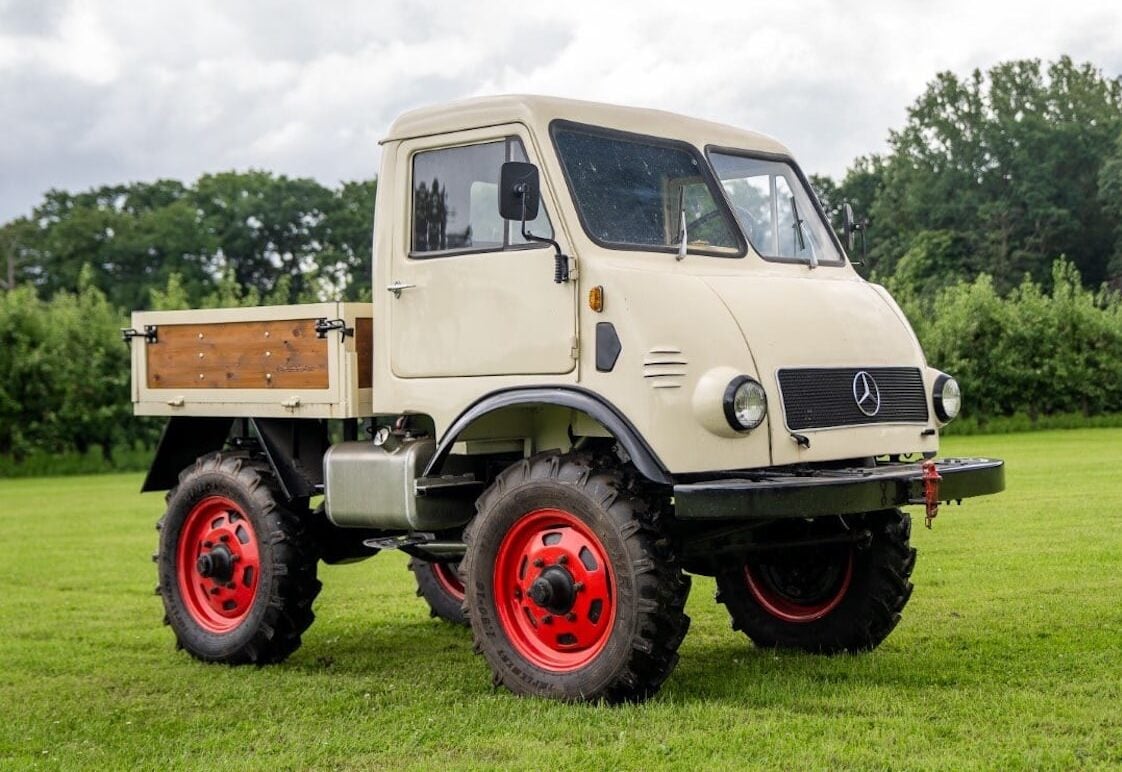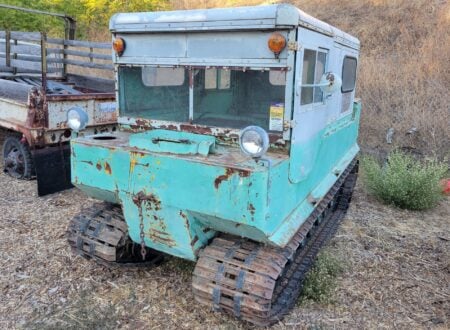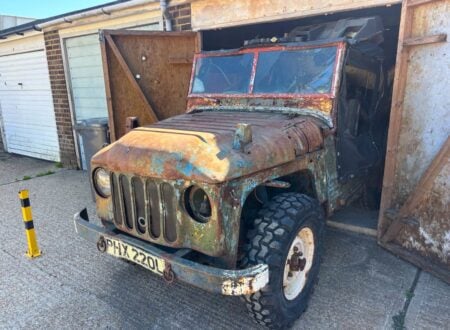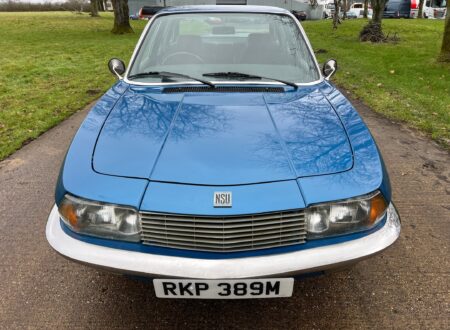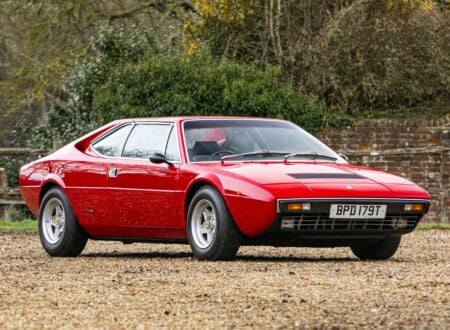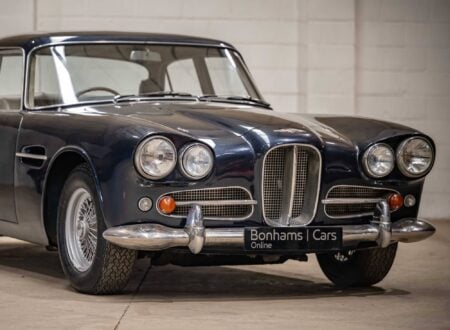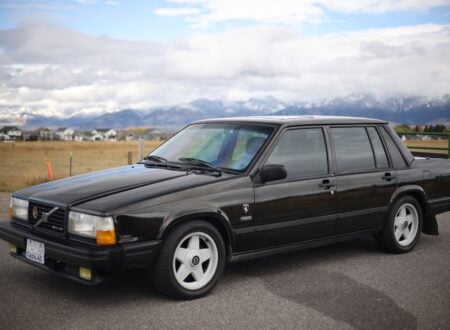This is one of the rarest examples of the early Unimog, it’s a Type 401 that was given a Westfalia conversion in-period to convert it from an open cab to a closed cab, nicknamed the “Frog-Eye” for its looks.
The first Unimogs all had open cabs with folding canvas soft tops. They kept out most of the rain but didn’t keep the heat it, and they were useless in heavy snow. The coachbuilder Westfalia developed a closed cab to address this issue, and it would have a large impact on Unimog design going forwards.
Fast Facts – The Unimog 401 Westfalia “Frog-Eye”
- This Unimog Type 401 was given a Westfalia-built closed cab in period, nicknamed “Frog-Eye,” giving it much better weather protection than its soft-topped contemporaries. This model built on the features of earlier Unimogs, which combined tractor functionality with truck versatility, becoming an iconic design known for rugged utility and adaptability.
- Originally designed in 1944, the Unimog’s unique engineering included four-wheel drive, portal axles for ground clearance, and front/rear PTOs for operating farm machinery. Its track width was tailored to match two rows of potatoes in German fields.
- This restored Unimog 401 “Frog-Eye” features a 1.7 liter diesel engine, a 6-speed manual transmission, and a dual-range transfer case. Finished in Off-White with Red steel wheels and a wood-lined cargo bed, it replicates the original factory specifications.
- Fully restored in Belgium, this rare Westfalia-converted Unimog 401 is listed for sale with 86,707 km indicated on the odometer. The restoration included renewing the electrical systems, and the vehicle is described as fully operational. The auction concludes on February 10th via Car & Classic, based in Sint-Truiden, Belgium.
The Unimog: A History Speedrun
The first plans for the vehicle that would become the Unimog were put to paper in Germany in 1944, in the closing stages of World War II. It was famously conceived to be a cross between a tractor and a truck, able to do everything a tractor could do on the farm and most things a truck could do on the road. As a result of this, the track width of the first Unimogs was exactly the same as two rows of potatoes in a German field.
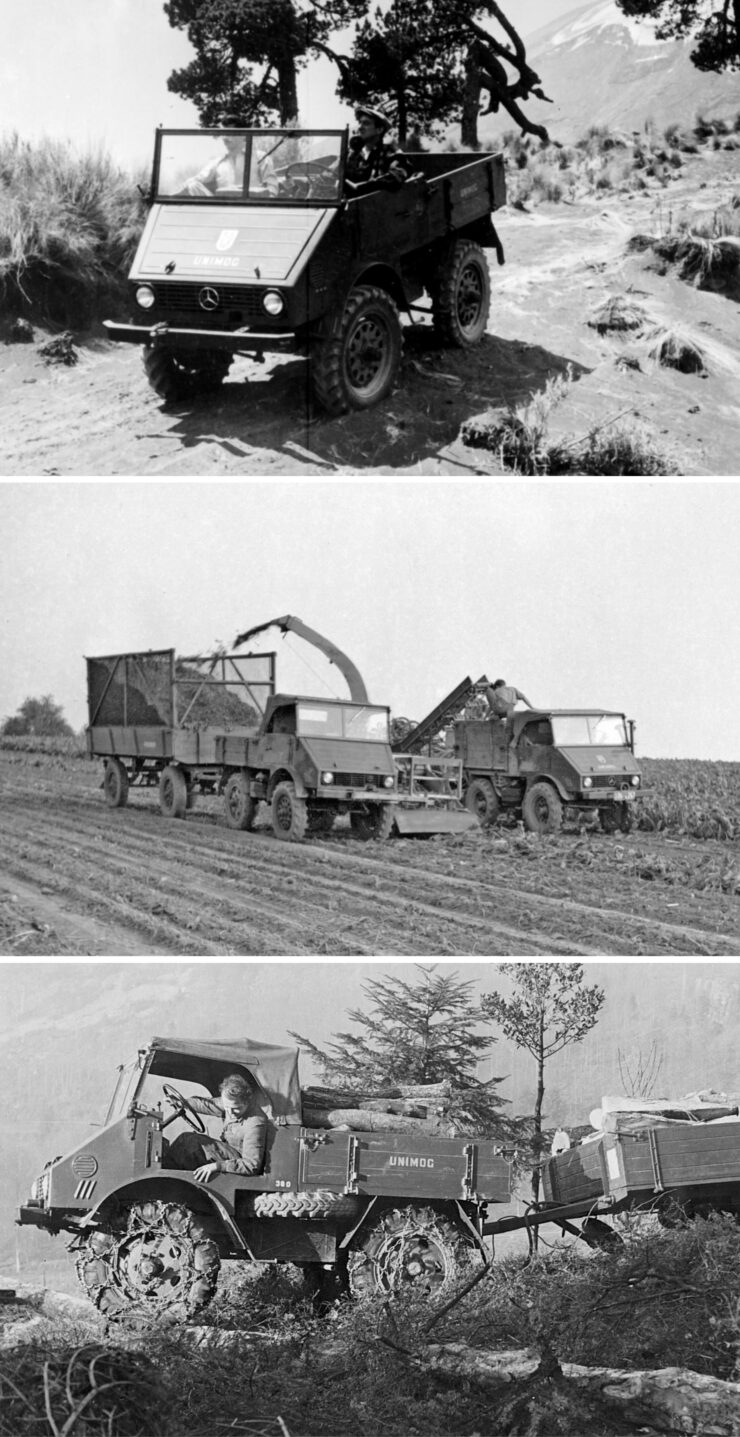

The design work that went into the first Unimogs was a testament to German engineering. They developed it as a four-wheel drive on coil-sprung portal axles to raise the differentials and improve ground clearance.
It had front and rear PTO (power take off) allowing farmers to use the engine to operate farm machinery, just as they would traditionally with a normal tractor. The Unimog’s frame was also designed to be flexible, further improving wheel articulation.
Across the English Channel a vehicle with a similar job description was being developed by Maurice Wilks, the Chief Designer at the Rover Company. It would become the Land Rover Series I. In the United States similar vehicles were also being developed, key among them the Dodge Power Wagon and the Jeep CJ series.
The ingenuity of the Unimog attracted plenty of attention, and Daimler-Benz took over the manufacturing in 1951. It remains a Mercedes-Benz vehicle to the modern day.
Unimog design would get more sophisticated over time, and modern models are state-of-the-art, but they can all trace their origins back to the original examples working in those German potato fields.
The Unimog Type 401 would make its debut in 1953 under Daimler-Benz ownership. It was a slightly more refined vehicle than its predecessors but it still had that open-top cab with a folding soft top.
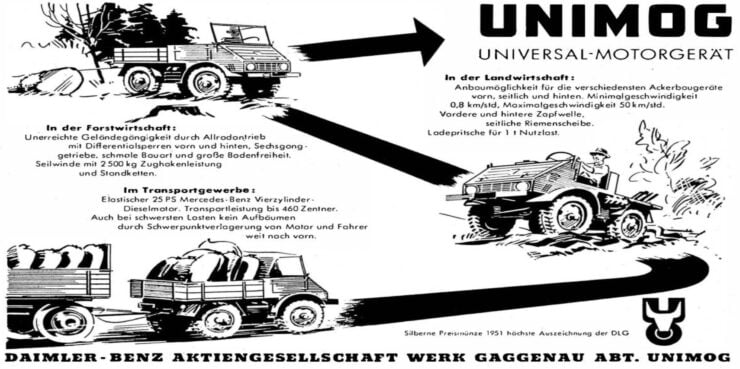

Coachbuilding company Westfalia-Werke, better known simply as Westfalia, built their own cab for the model and it proved immediately successful. It was nicknamed “Froschauge” – German for “Frog-Eye.”
It’s been said that this Westfalia design would inspired the design of later Unimogs with closed cabs, but very few of the originals have survived to the modern day.
The Unimog 401 Westfalia “Frog-Eye” Shown Here
The vehicle you see here is one of these Westfalia-built Frog-Eye versions, it’s been fully-restored to original condition, and it’s now being offered for sale out of Belgium.
It’s finished in Off-White with Red steel wheels and a cargo bed lined with wood, just as it would have come from the factory. It has 86,707 kms indicated on the odometer, there’s no way to know if that’s the original mileage from new however given the recent restoration it doesn’t matter all that much.
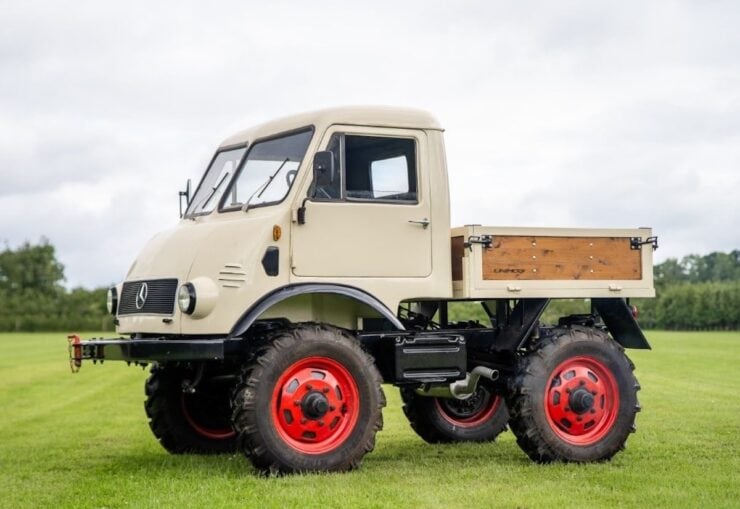

It’s powered by the correct 1.7 liter (1,767cc) four-cylinder diesel engine sending power back through a 6-speed manual transmission and dual-range transfer case. The listing notes that the vehicle drives as it should, and that all the electrical systems were renewed during the restoration.
If you’d like to read more about this unusual Unimog Froschauge or register to bid you can visit the listing on Car & Classic here. The sale ends on the 10th of February and it’s currently in the town of Sint-Truiden, Belgium.
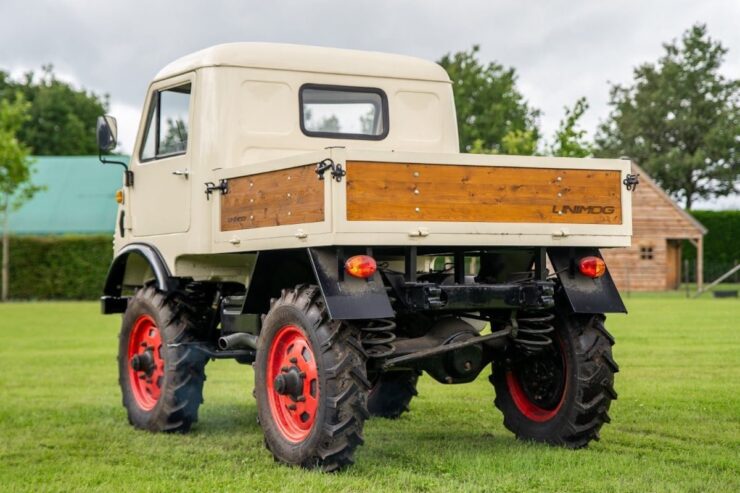
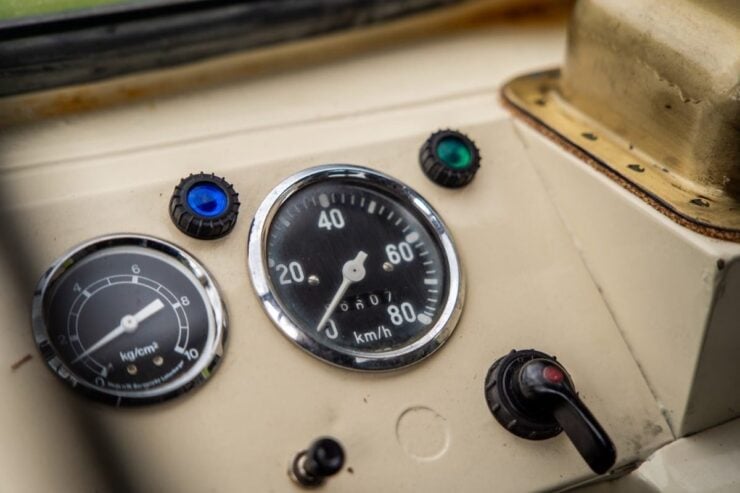
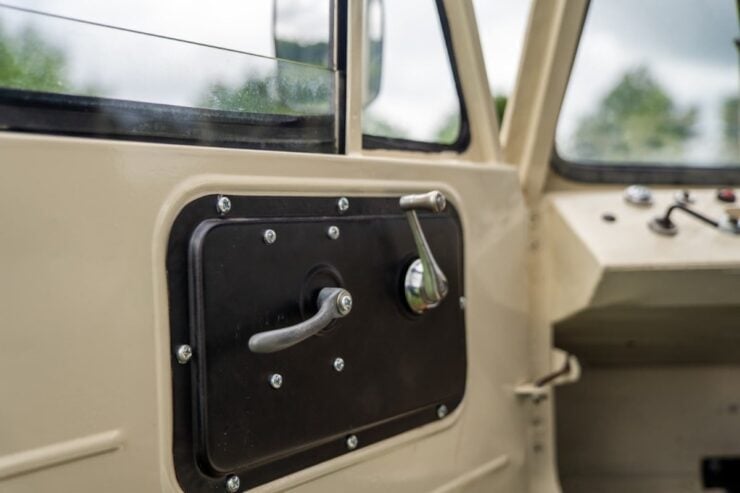
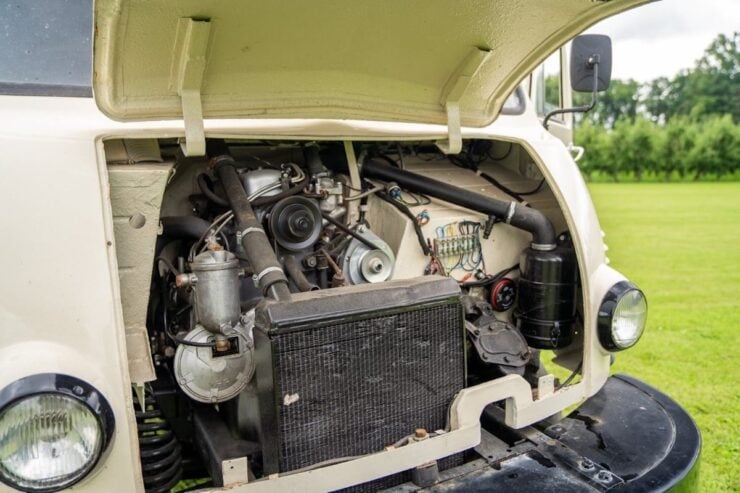
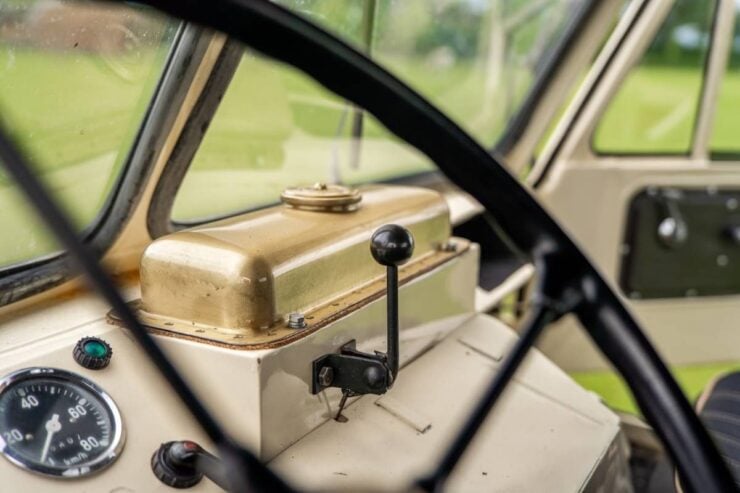
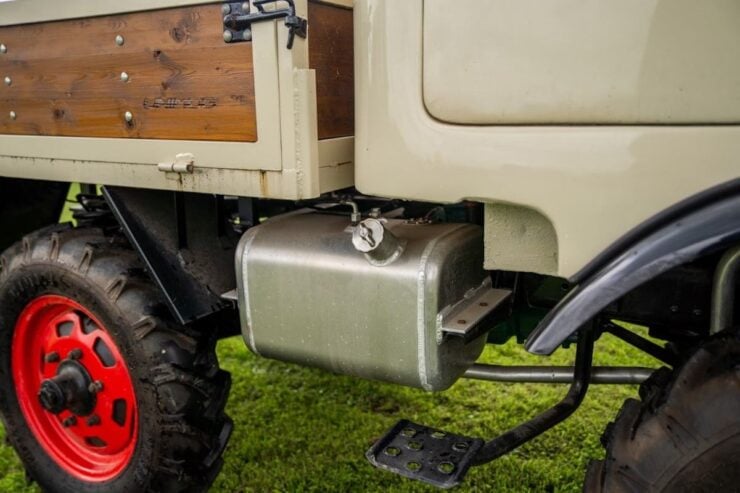
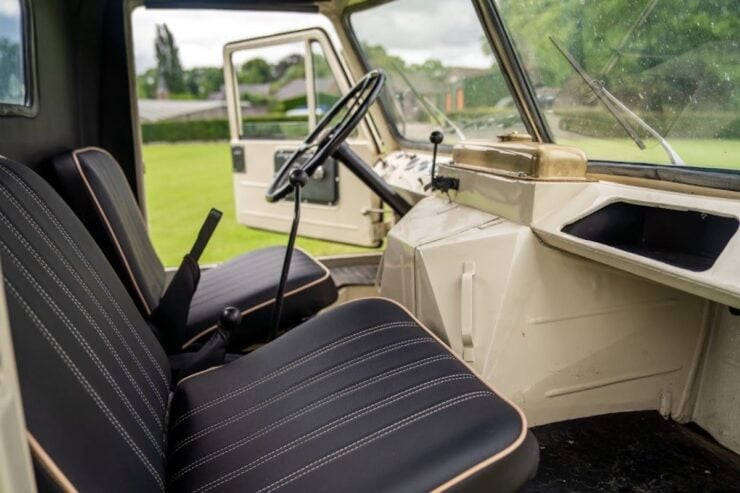
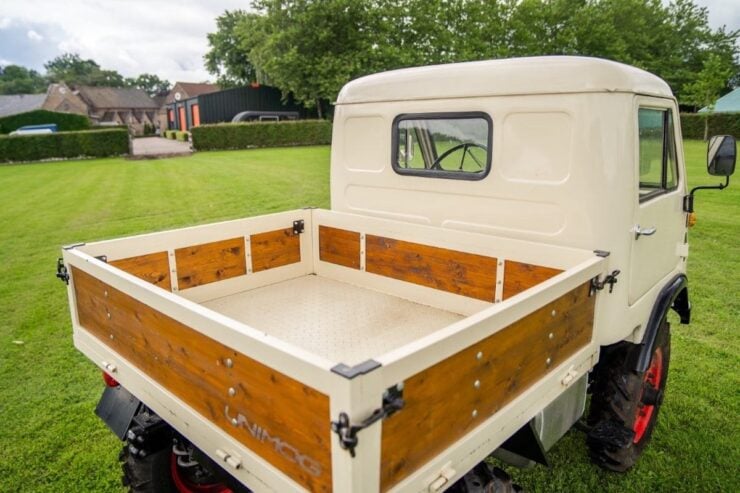
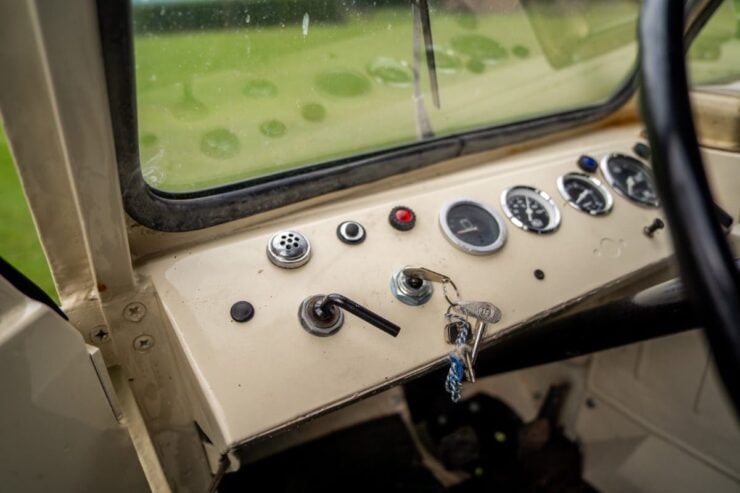
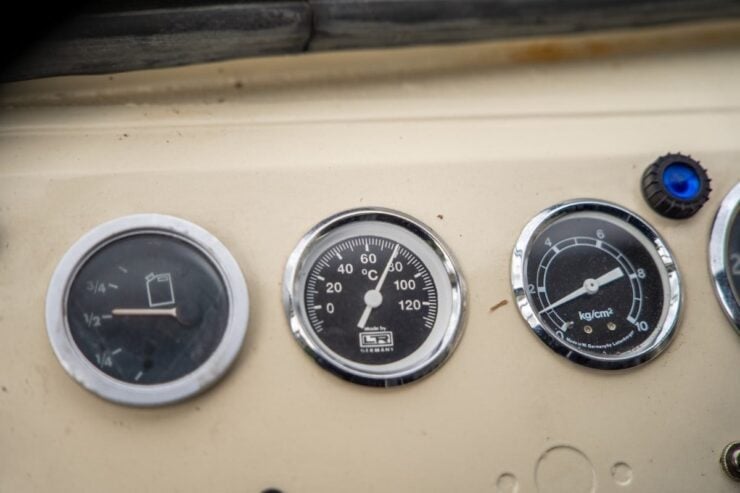
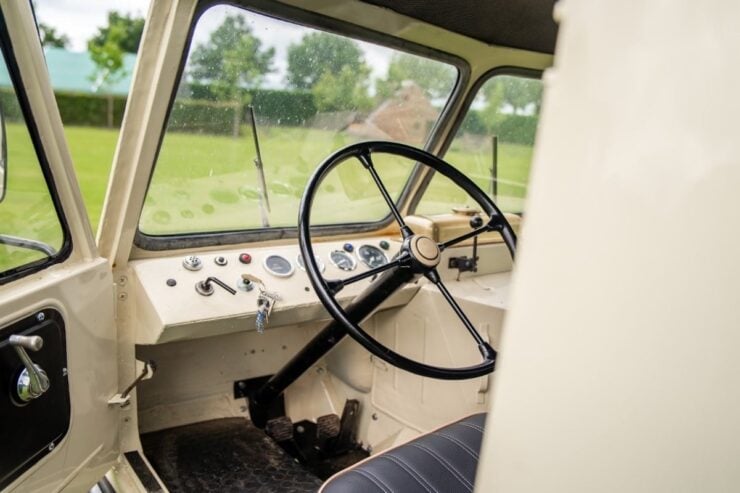
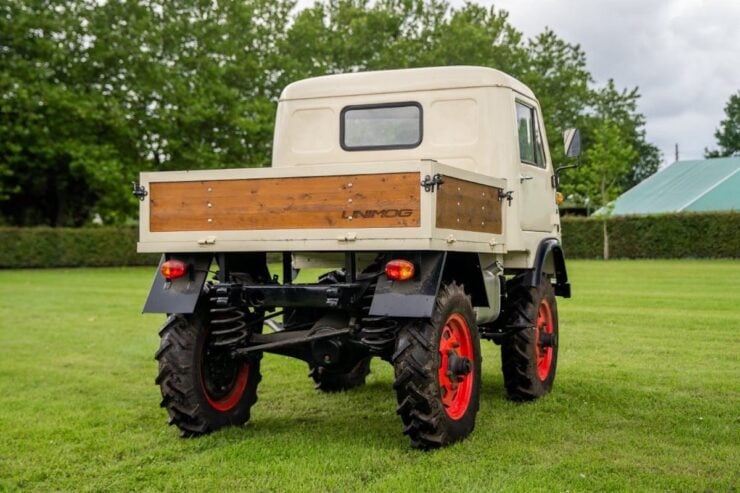
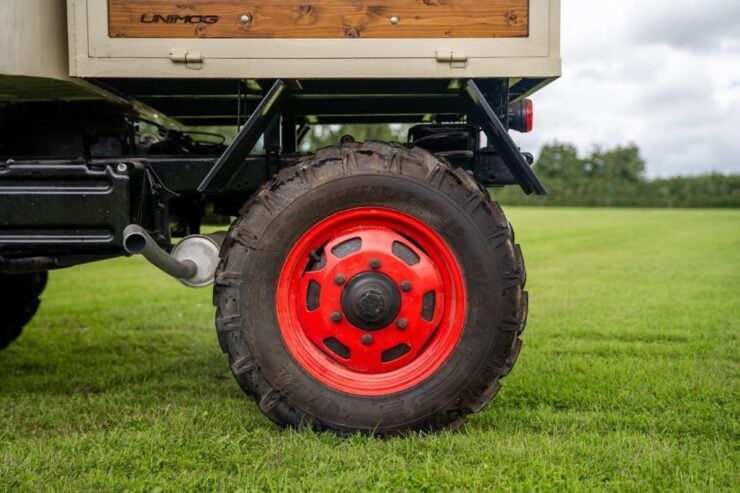
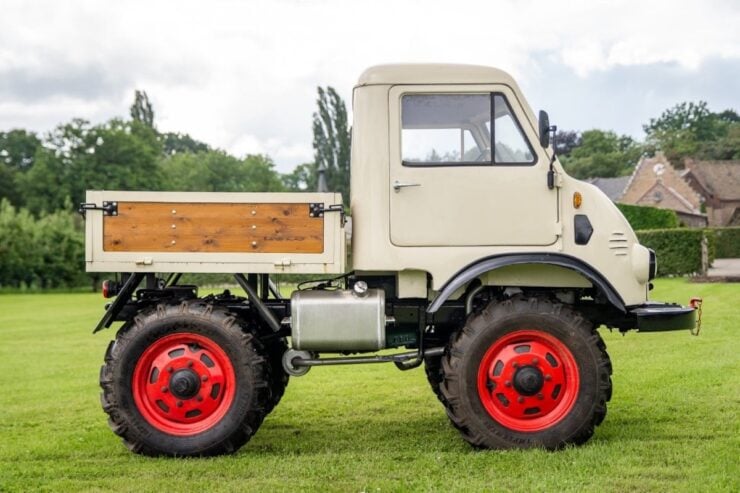
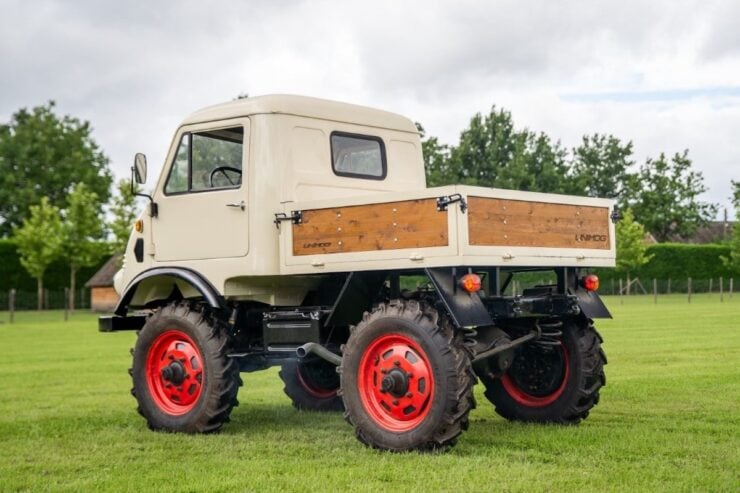
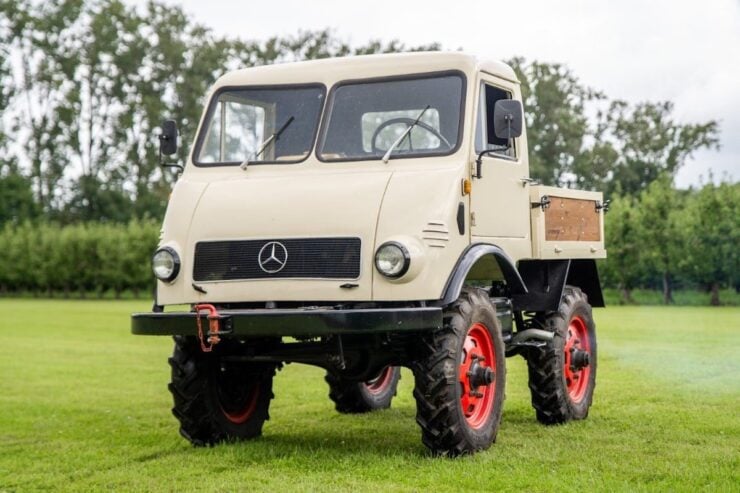
Images courtesy of Car & Classic

